I’ve never been a purist and will do just about anything to get a fish to eat, but there is something undeniably special about dry fly fishing. When the conditions are right on a river like the Delaware, I’d almost rather search for hours without a cast, waiting for a rise, than to pound the bottom where I might have better luck.
And so, with a summer gig working on the West Branch of the Delaware River, I found myself in the market for a dry fly rod. I decided to try my luck with the ECHO Dry in a 5 weight. As luck would have it, I caught a fish on my fist cast with the new stick. I drove down to a public access after work and watched the water for about 45 minutes before making one short, accurate cast followed by a delicate sip and an airborne trout. While my luck ran out soon after, the rod did what I asked it to do on that day and many others.
The ECHO Dry is, you guessed it, Tim Rajeff’s dedicated dry fly offering. Ranging from 2wt to 6wt, the 9’ ECHO Dry is designed for accurate and delicate casts at “real fishing distances.” All weights come in a green four piece medium-fast action blank, with stainless and low-friction ceramic guides, and a carbon fiber reel seat. The rod is paired with a hard plastic tube with cloth exterior.
If you’re looking for an affordable rod to lay down that perfect drag free drift, take a hard look at the ECHO Dry.
What Works
Action
The Dry is considerably more delicate than other ECHO trout offerings like the ECHO Carbon XL or ECHO 3. ECHO describes the Dry as medium-fast action and overall, it is, but while sporting a relatively soft tip, which serves its goal of being a dry fly specialist well. For those that have cast similarly tailored rods, expect the Dry’s action to land somewhere between the G. Loomis NRX LP and the Orvis Recon.
The rods run true to line weight and are designed to load optimally for the 25-50 foot cast. I could pretty comfortably shoot 50 or 60 feet or more on the casting pond, and sometimes even the whole line. While a tough rod to aerialize a lot of line with, you can still put a few hauls in and send it.
The ECHO Dry is a great option for shallow wade fishing, but really excels out of a drift boat where you are generally above the action and have plenty of room to cast. As with other soft-tipped, 9’ rods, I had trouble making those same 50 foot casts with delicacy when wading much deeper than my hips. A better, or taller angler might have more luck.

Flex and feel
The flex of the rod is great for fighting fish on light tippet, and the action suits the different types of casting, false casting, and mending you will need to execute in topwater situations. The soft tip makes for dainty landings, and the high-mid flex of the rod is great for throwing slack into your drifts and making quick mends.
Control
The ECHO Dry has excellent control in its 25-50 foot optimum range. It is responsive and allows for presentations that are a bit more nuanced than those made with a stiffer, fast-action rod. A slower, softer casting stroke will help you tap into what this rod is all about.
Aerial mending, reach casts, wiggle casts, and the like are a breeze on the Dry. Switching from dries to small indicator nymph rigs was comfortable, and with the Rio Trout LT, roll casting and feeding/mending an indicator drift was buttery smooth.
Price and warranty
The ECHO Dry is a darn good rod for its modest $229 MSRP. There aren’t a lot of dry fly-specific rods at that price point. Affordability has always one of ECHO’s selling points and they keep delivering the goods. The ECHO lifetime warranty is also hard to beat. I broke a different ECHO rod in an unfortunate drone accident (yes, really) and ECHO had a replacement in my hands in about a week for $35 plus shipping.
Line Pairings
While the Dry is able to cast a variety of lines well, for my casting style, the ECHO Dry favored lines like the Rio Gold and Orvis Hydros HD, while over-lined options like the Scientific Angler MPX and Rio Grand were overkill for the action. For the fishing I was doing, the delicate pairing of the ECHO Dry and long front-tapered lines like the RIO Trout LT or the Scientific Angler Versatile Presentation Taper (VPT) was the way to go.
What doesn’t
Not a lot of tricks to this pony
As its name suggests, the ECHO Dry does one thing better than any other and that’s gently plop a dry fly in the right spot to setup the perfect drift. But the ECHO Dry is a specialist, and if you’re aiming to fish this rod beyond dry fly fishing, it is important to understand its limitations. For nymphing, the Dry is somewhat limited to small indicators and relatively light nymph rigs. It's a bit soft for hook setting on long indicator drifts or making long roll casts or mends, but performs well enough while tight line nymphing or swinging wet flies. A 5 or 6 weight might be able to fish some streamers, but it wouldn’t be my top choice beyond small wooly buggers, deceivers, etc., on a dead drift. And expect the Dry to be a bit too delicate on big rivers like the Delaware when the wind kicks up.
It's also kind of a bummer that the Dry only comes in a 9’ blank, as I would have liked try out a 10’ configuration.
Conclusion
Overall, the ECHO Dry is an extremely castable rod—with the softness and finesse required for delicate dry fly fishing—that is well worth the price of admission. I have come to enjoy the feel of this rod despite my fast and aggressive casting tendencies. It has been an overall excellent performer during both the wade and drift boat fishing I’ve tasked it with it. Through much of the blank, it provides that fast-ish action that many of us prefer while, via its soft tip, offering enough feel to excel at the dry fly game. Paired with the right line, this rod is very precise and controllable within its effective range—that 25 to 50 foot sweet spot. If you’re not looking to drop the dough on what can often be significantly spendy dry fly specialist rods, the ECHO Dry is a compromise that isn't much of a compromise at all.











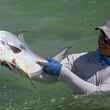
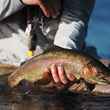



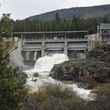





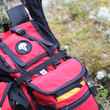




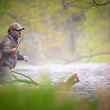


Comments